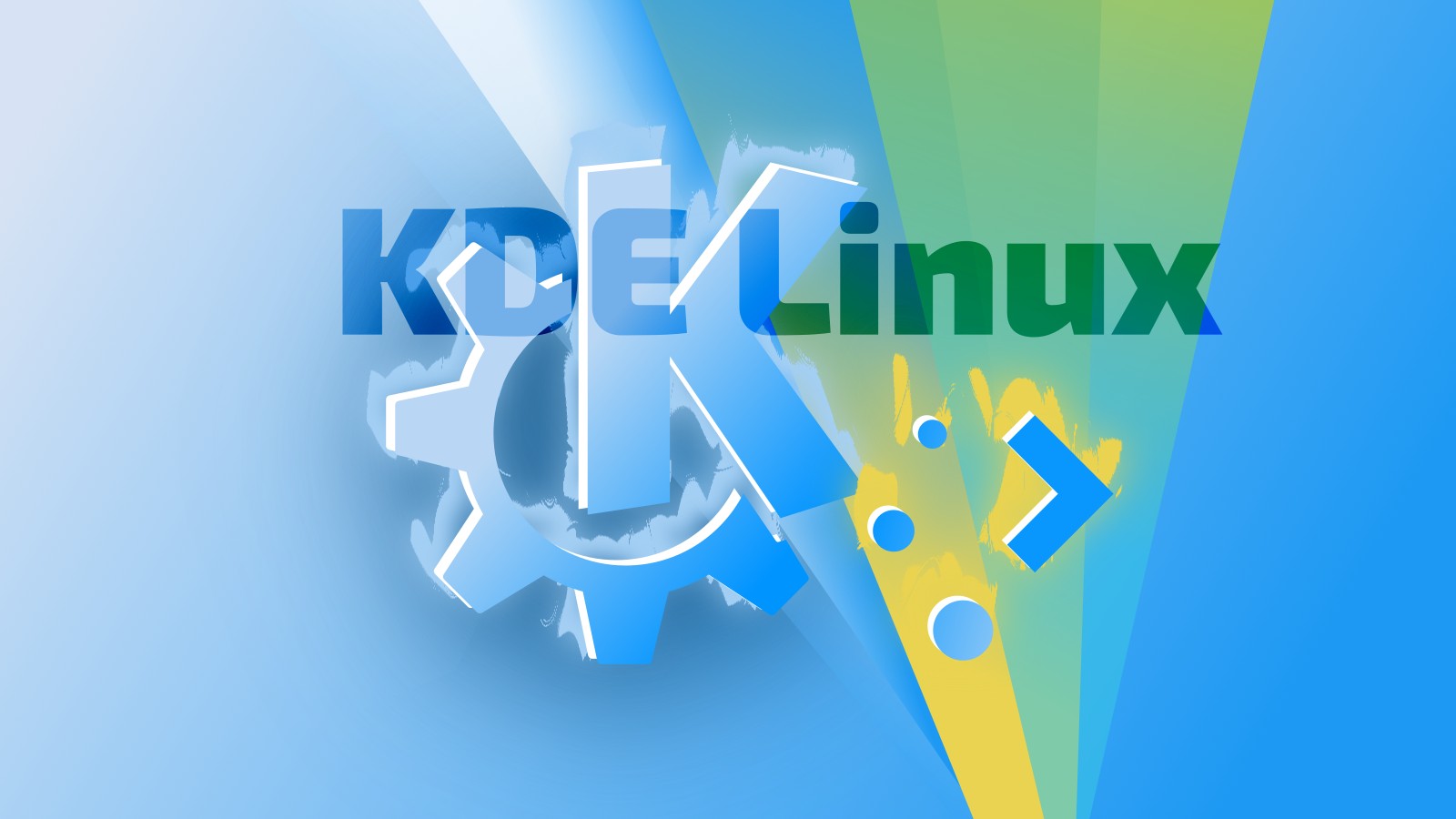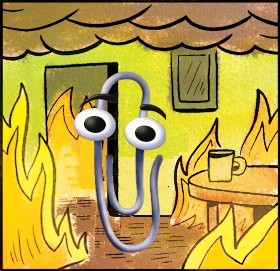- cross-posted to:
- linux
- cross-posted to:
- linux
I vote to kill snap
I can’t believe they used this as a pro for their distro…
I am currently only on Linux on my Steam Deck and I do have two RPi’s (though I don’t actively use them) so I don’t have personal current knowledge of differences between Snap, Flatpak, and App Image beyond that A: Snap always brings up lots and lots of hate in comments and B: is from Canonical.
But is it possible that they might choose to use Snap for having more program options due to Ubuntu being such a “mainstream” distro? I know lots and lots of programs do release Flatpaks, but are there more of them or does Snap have more? Real question since I am aware of how heated some threads get with folks being really “fuck Snap” or “it is fine.” Mostly just curious since I am more and more likely to move my main PC to Linux as my main OS after Windows 10 is dead.
Snap doesn’t just bring lots of hate in comments it also brings a lot of bloat in your system which is a big no in Linux community. Another thing is canonical is going out of their way to force snap. In Ubuntu even if you do apt install it is installing snap packages.
I’m not sure if there are more snap packages than flatpaks or .deb/.rpm but most Linux users are competent enough to either add custom repos or follow simple build instructions to build from source.
But flatpak also brings a lot of bloat. That’s the point of these 2 formats. You are trading bloat for portability.
The question here is not which one but why not both[*]? Also the target audience for this distro doesn’t know how to add repos, that’s the point of it.
[*] the answer is that Snap Store has had malware in it multiple times but that could imo be solved by a disclaimer
I wasn’t aware of Snaps being used in-place of regular installs with apt. Are they shown to be Snaps in the name of the program when using apt search? And if there is a Snap and a regular deb, do they both show up (again if using apt search)?
Think of it as the Mac appstore VS the Windows App store. Mac apps (flatpak) are the same as desktop apps, but sandboxed, the store isn’t intrusive, and people found it convenient, so it was fine. Then the windows app store (snaps) launched and it did basically the same thing but slightly worse, except Microsoft (canonical) forced it down its users throats, so people hated it.
Both camps are right, from a technical perspective, snaps are fine, but philosophically, it sucks, and the Linux community cares way more about the latter than the former, otherwise they’d all be running windows.
I think that your example of the App Store and the Microsoft Store is helpful! I work on both systems at my job fixing computers for consumers. The only thing I dislike about the App Store is that it doesn’t let you install things without first signing in with an Apple ID (the spam levels of pop-up messages trying so freaking hard to make you sign in is infuriating). But the MS Store feels like all the worst parts of the Play Store and really fucks things up if it breaks. I will likely remember your reply the next time I think about Flatpaks and Snaps though. lol
I don’t like Snap too, but it has some advantages over Flatpak. And unfortunately the most popular distribution still uses Snap. In example it is easier to create Snap packages
and Flatpak does not support CLI only applicatoins( Edit: my bad ) , but Snap does (something like grep in example). Also some may like it more that Snap relies on AppArmor instead using the custom solution of Flatpak.All in all, its not like black and white which is better. I still wish only one of the formats would exist, because this is not the kind of fragmentation I wish to have. But both exist and the end user should decide which of them to kill.
deleted by creator
I am pretty sure Ubuntu is still far and away the most popular desktop distro. For servers I would have guessed it was something like RedHat/CentOS or possibly Debian.
Flatpak does not support CLI only applicatoins
Where does that misinformation come from? That’s not the first time I’ve heard it. Was that actually true at one point?
In think it comes from flathub not having many cli applications in it. I’d love to drop snaps for Flatpak only. But I can get so many snaps that aren’t on flathub it’s crazy.
Maybe you are right. Its something I repeat it myself, after doing a research back when it was new. Given Neovim is available on Flathub, maybe its possible. Maybe it was true at some point. Good catch, I’ll make sure not to repeat that anymore, as I don’t want spread misinformation.
It says possibly snap, so we can hope…
What is so hated about snaps? I’ll admit I haven’t used Ubuntu since they started using snaps, but I don’t understand the hate about them in the Linux community.
The place to get snaps is proprietary and exclusive.
Oh… yeah I see the issue.
deleted by creator
If it’s only there like in KDE Neon, I’m fine with it. I don’t want any of my distro apps to come as Snaps though.
Why? What’s the issue with Snap? Is Flatpak any better?
Yeah, Flatpak is far better. The most glaring issue: Canonical hosts the only Snap backend, you can’t host it yourself. Flatpak on the other hand is fully open.
Don’t introduce proprietary crap just so companies can profit off of it.
Don’t introduce proprietary crap just so companies can profit off of it.
I agree but I think it’s the user who should be able to make the informed choice (ie. during installation)
Honestly, why enable this kind of behavior in any way? Any user is free to make an informed choice by installing it themselves.
We all know how this goes. Once a critical mass is reached, enshittification begins to milk everything dry. By making it an installer option, you’re legitimizing it and supporting a worse future for the Linux desktop.
Ok but KDE has official Snap packages so they already are “legitimizing it”. Also snap won’t be able to entshittify anything. Snapd is still open source, so you can just repackage the software for different package system.
My guy. There is no open backend for Snap. If Ubuntu enshittifies Snap, nobody can host an alternate backend for them. How does the client being open source help you?
You simply use a different packaging format as I said in the previous comment.
deleted by creator
This is a stupid argument. In FSF’s eyes even having nonfree repository (ie. for drivers) is bad so this is completely irrelevant for anyone considering flatpak or snap. Both have nonfree stuff in there.
deleted by creator
I’m not arguing whether snap or flatpak is better. Flatpak is better.
But your arguments are going against each other. You disagree that FSF should tell you what software you can use but then you want to tell other users what software they can use. If you use flatpak despite of FSF’s opinions, you should let people use snap despite of your opinion.
I use Karch, btw.
Burn Snap out of there and I’m in.
Edit: looks like they’re not putting much towards snaps, it’s mostly Flatpak and systemd-sysext. I’m good with that.
I like that snap support is included. You can’t easily add it to immutable distros and there is still some software out there only easily available via snaps.
This article is far too hypey. One dude has started this initiative and needs people to work on his concept to get it off the ground. I’m not opposed to a red-hat free immutable system, but this one is so far from maturity this article is selling a first drawing like an almost finished product. Remind me in two years how this went.
Harald, the main architect behind it is already running it as his daily driver. Many others (myself included) are already testing it in VMs and on spare hardware with only very minor papercut issues to be resolved.
Sounds great! I’ll have a look once the user infrastructure is in place.
The distro is designed to be a bulletproof, highly user-friendly operating system that showcases the best of KDE technology—a system that KDE can confidently recommend to casual users and hardware manufacturers.
So it looks like there will finally be a distribution that Windows, Mac, and ChromeOS users can jump to and just start using without having to learn much and with a much better and more familiar GUI than GNOME.
I think you’re exactly right, honestly I think this has potential to be huge. Whether we like it or not, in order for a lot of mid-level savvy users to feel comfortable switching over they need a “default” option (like joining mastodon.social) to get their feet wet. A distro specifically built for KDE I think could appeal to a lot of people.
EDIT: Also for the people buying laptops in businesses and schools obv
deleted by creator
So you’re telling me that if snaps take off and become a standard there’s a good chance I’ll have to use them just to get my drivers? Now I hate them even more!
No but you see the drivers will be (must be) approved by Canonical which surely makes things better :|
it’s actually the other way. Canonical has had troubles policing Snap Store from malware
This is highly unlikely. Snapd is open source so you can just repackage the software for your distro of choice. I don’t think giving users the ability to use both Flatpak and Snap is bad. Though I would put Snap behind a disclaimer due to Snap Store’s history.
what’s the benefit of packaging drivers that way? surely not permission separation
Probably not the purpose of this distro but using snaps in this way are a massive benefit for embedded systems
99% of people don’t understand anything about Snaps except from thinking they’re worse than Flatpak
Ooo damn that sounds exactly what I’d like to try.
On the other hand I feel like I’m too old for this shit. My system works fine, I understand everything, and things rarely break and never in an unrecoverable way.
The beauty/advantage of Linux Eco-system is one can pick and choose based on his/her preferences.
I’m a bit the same but I tried the switching between versions and it’s amazing.
I think gnome is working on the same sort of thing, read here.
I’m glad to see both going for an immutable os with flatpaks. It’s so much more user friendly for the average person and if you are more technically inclined distrobox makes it a breeze to use it like a regular linux desktop.
I hope both do well
I thought we all agreed that “immutable” is a confusing term and that we should call it “atomic”
edit: I was wrong
What does atomic mean in this sense? That seems more confusing than immutable.
It means a change either applied completely and successfully, or not at all (think “atomic transactions” in databases).
Atomic in software refers to an operation that cant be interrupted because it happens in one step. This one of the big selling points of atomic or immutable distros. Your system will not be left in a broken state by cancelling an update because updates do not take multiple steps, unlike traditional distros.
How could you install anything or change any setting if it was truly immutable?
Immutable OS makes sense in certain scenarios, but not in home computing.
Do a little research, dude… Do you think you’re the first person to have those questions/issues? That’s all been addressed.
I’ve been on an atomic/immutable distro for a few months now (Bazzite), and the experience has been great.
I disagree, because they are not the same thing.
Immutable means read only root.
Atomic means that updates are done in a snapshotted manner somehow. It usually means that if an update fails, your system is not in a half working state, but instead will be reverted to the last working state, and that updates are all or nothing.
I create a btrfs snapshot before updates on my Arch Linux system. This is atomic, but not immutable.*
There is also “image based” which distros like ublue (immutable, atomic) are, but Nixos (also immutable and atomic) are not.
*only really before big updates tbh, but I know some people do configure snapshits before all updates.
Who said that?
Fedora has pushed for the change by rebranding their immutable distros as Fedora Atomic Desktops, and these are likely the most popular immutable distros. Bazzite’s homepage also describes the distro as atomic, but never mentions the term immutable.
Red Hat
Not all. Red Hat started this by naming their immutable distributions with “atomic” (but then not consistently…). Some people agreed, but not everyone.
No? Why?
How is atomic less confusing? Immutable means that something doesn’t change, atomic means that it’s the size of an atom or has nuclear energy
EDIT: I’ve learned that some people are overly pedantic about the meaning and practical use of the word “immutable”, so much so that they decided to create a bigger confusion by giving another word a completely different and exclusive meaning
Atomic in software refers to an operation that cannot be interrupted, like the updates in these distros. Immutable is a more confusing term, as it leads users to believe that cannot control parts of the system, when in reality these distros still have tools to do so.
It’s not semantics, they are two different things.
And to your edit… Are you upset that there are two different words that mean two different things? I don’t understand.
they decided to create a bigger confusion by giving another word a completely different and exclusive meaning
Isn’t this just how words work…?
atomic has had a meaning for a very long time in IT, don’t pretend that it’s something made up bullshit. with this thinking we could just throw out the word mutable/immutable too, what is it my computer is radioactive and I’ll get cancer from it? of course not, because it has a different meaning with computers, and people in the know (not even just professionals because I’m not one) know it.
atomic means that if multiple things would change, they will either change at once, or if the task failed none of it will change.
sometimes these are called transactions, suse calls it transactional updates. but is that any better? now the complaint will be that suse must have transacted away all the money from your bank account!and distros are obviously not immutable, that’s just plainly misleading. we update them, someone does that daily. updating requires it to be mutable, to be modifiable.
Immutable does not mean “not changing”, but rather that you don’t have the rights to change. If you take the immutable option away, then its changing again, like when you update your system. People who have a problem with the term say, “see its not immutable, the term is a lie!”. Which I kind of agree, but somewhat conflicted.
Atomic is an attempt to create a new “meaning” with a word, that cannot be misunderstood. Its trying to avoid the situation of “Free” in example. But I don’t like the term Atomic either, because it just suggest to me that everything is split into many little parts and is not self explanatory like Immutable. I’m conflicted here too.
I’m always conflicted.
How could you install anything or change any setting if it “doesn’t change” ?
Settings live in user space. Software exist in containers like AppImage, Flatpak or Distrobox. If something need deep system integration, they can be layered on top of the system in the user layer. Immutable does NOT mean less control. Just exerting control over the system in a different, usually more systematic, automatic and deterministic way.
Ah yes, the immutable OS, except for all of the various mutable parts.
We should totally not call it anything less confusing.
It’s not confusing at all… How is this any more confusing than:
Flatpak - they’re not literally flat…
Snap - I’ve never seen or heard any evidence of something snapping by any definition of the word I’m aware of.
Dolphin - what the fuck is this, no sea life whatsoever!
Kate - this is a text editor, not a person.
Distrobox - not in an actual box.
etc.
The main difference to your examples is that an “immutable OS” is in fact mutable, while none of your examples describe themselves with an adjective that is contradicting with their function/inner workings.
Flatpak is a pretty good name, because it makes software flat in the sense that it avoids having a (tall) dependency tree.
I installed Bottles, but was disappointed when it didn’t actually have anything to do with bottles.
If you think every name of every product, etc., is going to be literal… you’re gonna have a tough time in life.
Maybe they’ll fix the sddm custom theming? It’s currently broken on all immutables and doesn’t allow custom themes.
Yeah that’s certainly annoying but still relying on SDDM to solve this. There is a movement to see if we can import SDDM into the KDE umbrella but it’s a bit stalled at the moment.
Snap WTF?
Ingl, this sounds like exactly the thing I want. Immutability aside, this is how I use EndeavourOS right now, but more sophisticated.
I’m sold on it.
I use Fedora KDE but this one sounds like exactly what I need. I primarily use Linux for software dev and web browsing and Windows for gaming and Office.
Fedora Kinoite exists already. It’s my daily driver for dev and gaming and works great for me.
I wonder what the differences will be!
I use normal KDE because I don’t know how much of a hassle it would be to put everything in containers and use flatpaks for everything.
Alright I am installing this



















